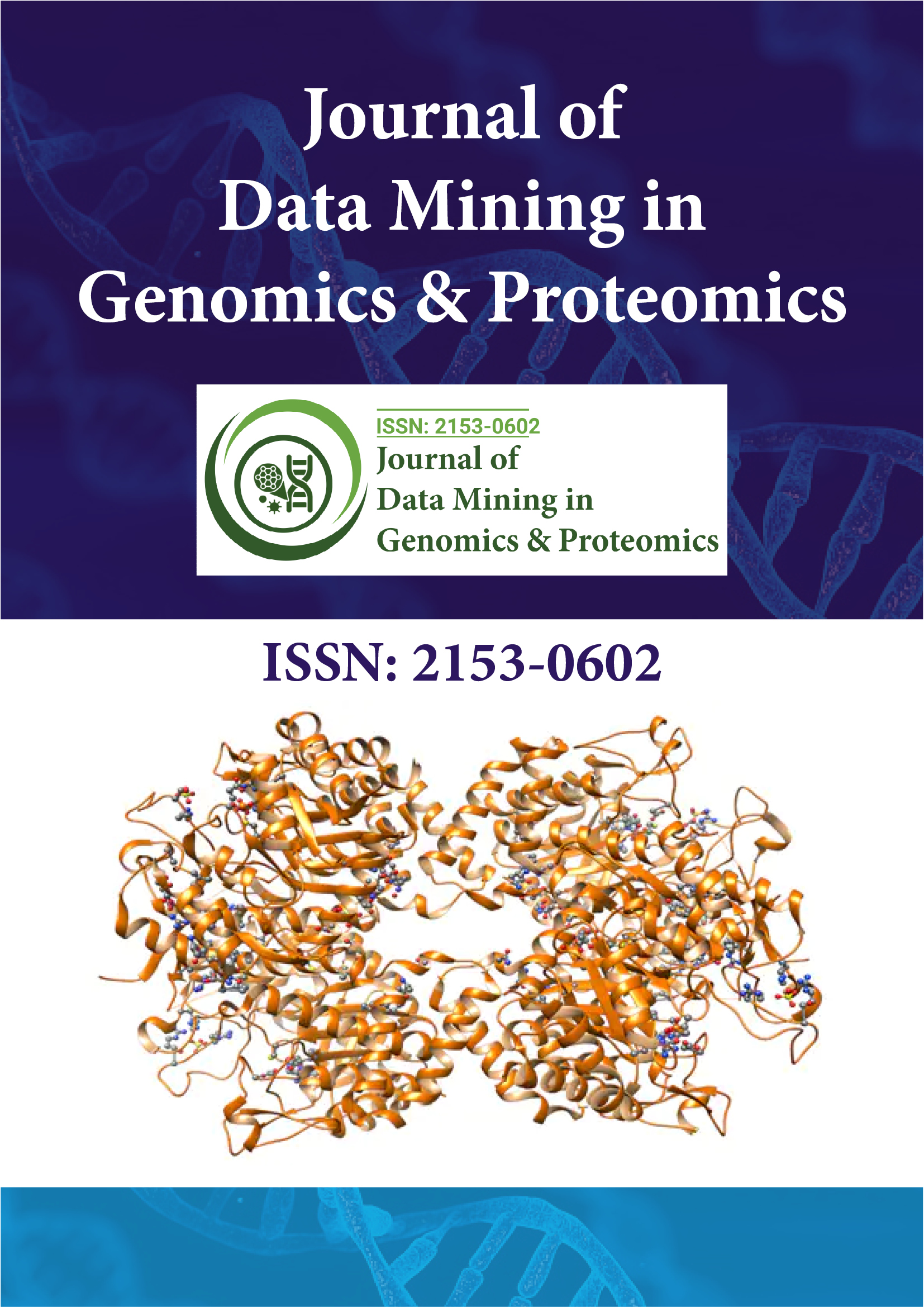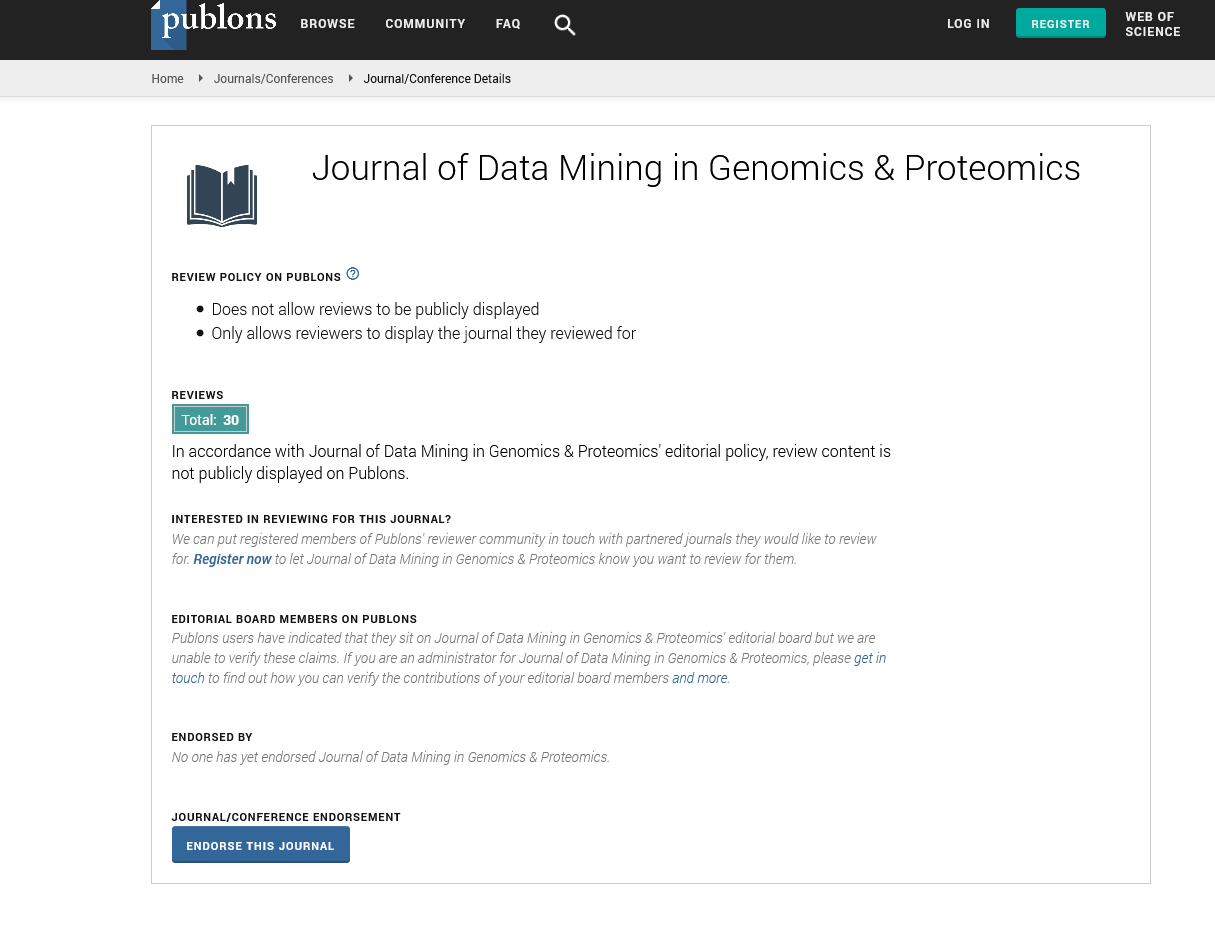PMC/PubMed Indexed Articles
Indexed In
- Academic Journals Database
- Open J Gate
- Genamics JournalSeek
- JournalTOCs
- ResearchBible
- Ulrich's Periodicals Directory
- Electronic Journals Library
- RefSeek
- Hamdard University
- EBSCO A-Z
- OCLC- WorldCat
- Scholarsteer
- SWB online catalog
- Virtual Library of Biology (vifabio)
- Publons
- MIAR
- Geneva Foundation for Medical Education and Research
- Euro Pub
- Google Scholar
Useful Links
Share This Page
Journal Flyer

Open Access Journals
- Agri and Aquaculture
- Biochemistry
- Bioinformatics & Systems Biology
- Business & Management
- Chemistry
- Clinical Sciences
- Engineering
- Food & Nutrition
- General Science
- Genetics & Molecular Biology
- Immunology & Microbiology
- Medical Sciences
- Neuroscience & Psychology
- Nursing & Health Care
- Pharmaceutical Sciences
Editorial - (2021) Volume 0, Issue 0
Ribosomes: Atomic Machines Association between Nucleic acids and Proteins
Martinx Martinez Sobrer*Received: 08-Jul-2021 Published: 29-Jul-2021, DOI: 10.35248/2153-0602.21.s6.e001
Description
Ribosomes are the atomic machines which structure the association between nucleic acids and proteins in every single living being. The ribosome's reliance on ribosomal RNAs (rRNAs) for its capacity has made them be moderated at both the arrangement and the design level. Along these lines, rRNAs are regularly utilized in near investigations like phylogenetic deduction. Similar examinations have gotten more well known as more genomes have been totally sequenced, yet can possibly become convoluted when a portion of the qualities they depend on are inadequately commented on or not explained by any means. Sadly, this is regularly an issue with rRNAs as genome comment pipelines ordinarily do exclude instruments explicit for rRNA recognition. All things being equal, rRNAs are regularly situated by grouping closeness searches like BLAST. Albeit such ventures may offer sensible responses because of the great degree of arrangement protection in the center locales of the qualities, utilizing such outcomes for comment purposes can be dangerous. The legitimacy of the list items relies upon the program and data set utilized. Transforming either of these can definitely change the outcomes. Genomic information bases have developed dramatically in the course of recent many years and search programs have as a result needed to go through consistent modifications to meet the necessities of the examination local area. In this manner, the aftereffects of an inquiry done today are most likely altogether different from those created quite a while prior. An additional complexity is that the most usually utilized data set hunt strategies have lackluster showing for noncoding RNAs. A new report looking at a few changed techniques for anticipating noncoding RNAs, including rRNAs, tracked down that the most normally utilized strategies gave the most wrong outcomes.
Through our work on the Genome Atlas information base, we have seen the consequences of helpless comment of rRNAs. A few genomes don't have any rRNAs explained whatsoever, though different genomes appear to have rRNAs commented on some unacceptable strand. We at first attempted to do deliberate BLAST look, however it demonstrated hard to keep up with consistency all through this interaction. The significant degree of arrangement protection among the rRNAs empowered us to make covered up Markov models (HMMs) from primary arrangements. Such models are more equipped for catching the succession variety that is intrinsically present in the rRNA quality families than basic BLAST look. Utilizing HMMs likewise works on the utilization of normal measures for expectation evaluation. A library of HMMs was built and the program RNAmmer was created to utilize this library. RNAmmer is accessible through the CBS site, as a web administration or as an independent bundle. It has been tried on completely distributed genomes and gives precise forecasts of rRNAs. The program additionally has the additional advantage of creating results that are similar between genomes. Ongoing gem examines have uncovered that protein combination generally is subject to the rRNAs and this has no doubt been instrumental for their significant degree of preservation.
In prokaryotes, the 16S, 23S and 5S rRNAs are generally interpreted together, while the 18S, 28S and 5.8S rRNAs structure a transcriptional unit in eukaryotes. Eukaryotic 5S rRNA normally show up in exceptionally copied pair rehashes. In many life forms, there are a few duplicates of the rRNA record unit, and in spite of the fact that however much 11% grouping dissimilarity has been seen between units inside a similar genome, the thing that matters is generally under 1% . In a few cases, fragments are additionally altered out of the translated rRNA. These sections might be introns that subsequent to joining leave a consistent rRNA, or they can be mediating successions (IVS) that leave a divided rRNA which is as yet useful inside the ribosome structure. Introns are generally predominant in eukaryotes and archaeas, while mediating arrangements have been found in eukaryotes and microorganisms. Introns are prevalently found inside moderated groupings near tRNA and mRNA-restricting destinations, while interceding successions are normally seen in hypervariable districts.
Citation: Sobrer MM (2021) Ribosomes: Atomic Machines Association between Nucleic acids and Proteins.J Data Mining Genomics Pr.oteomics. S6:e001
Copyright: © 2021 Sobrer MM. This is an open-access article distributed under the terms of the Creative Commons Attribution License, which permits unrestricted use, distribution, and reproduction in any medium, provided the original author and source are credited.

